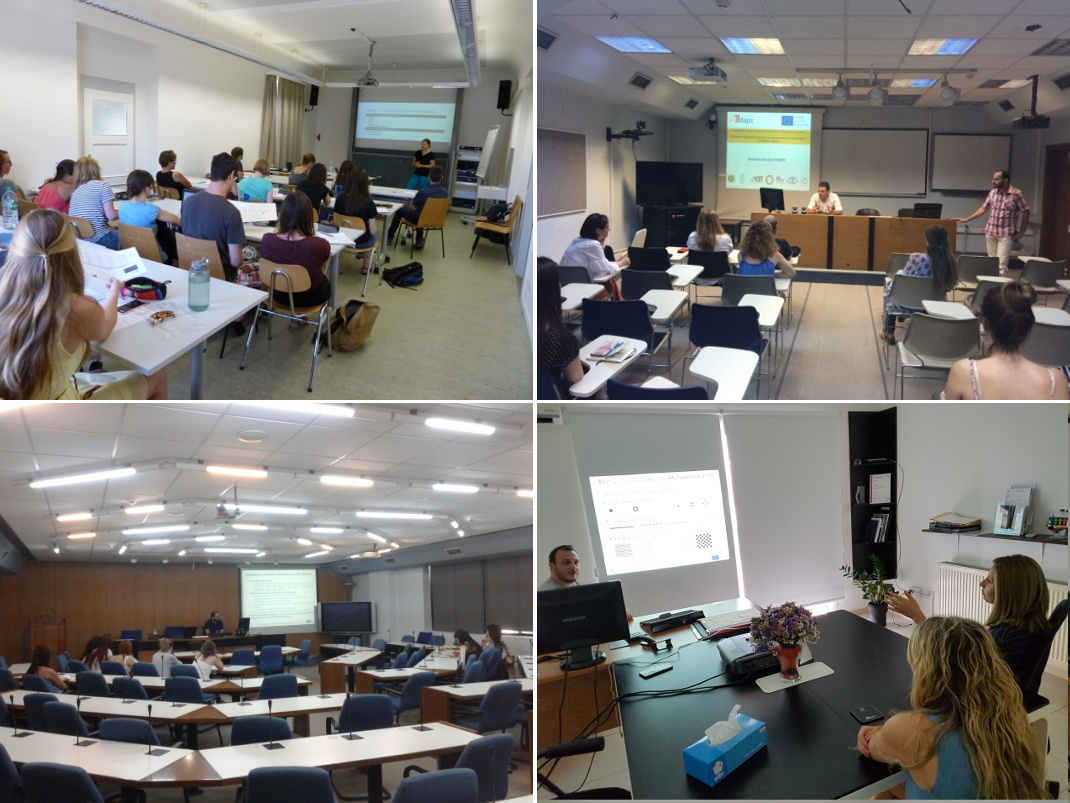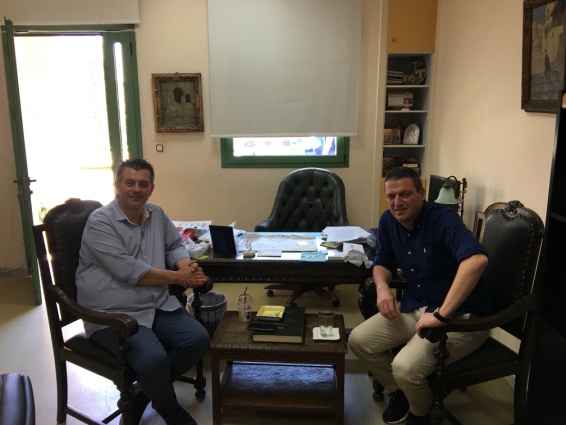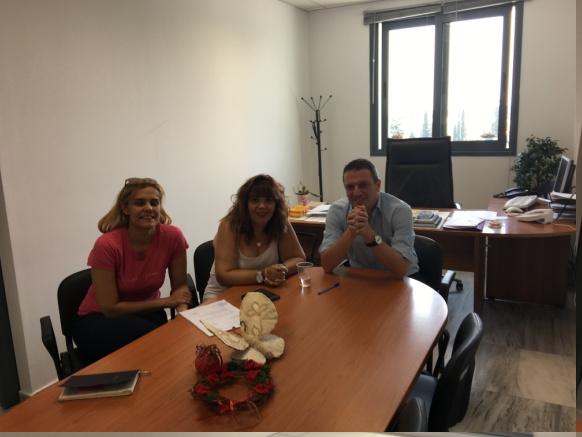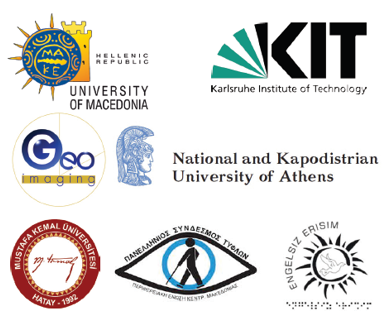6th Issue, June 2017

Newsletter No. 6
ATMAPS - Project End
Welcome to the 6th Newsletter of the ATMAPS project. In this newsletter, we would like to inform you about the final outcomes of our project "Specification of symbols used on audio-tactile maps for individuals with blindness (ATMAPS)". In this issue of our newsletters, we provide information about the final outcomes of the ATMAPS project.
Highlights of ATMAPS Project
Web-based Audio-Tactile Symbols Library
A multilingual Web-based Library of Audio-Tactile Symbols was developed so as to be utilized by designers of audio-tactile aids for individuals with blindness in order to simplify the audio-tactile map construction for different types of maps (i.e. AT-maps of indoors, neighborhood/residential area, campus, city center, political, physical, historical and thematic).
The multilingual web-based library of audio-tactile symbols is available on the project website www.atmaps.eu.
The audio-tactile symbols are freely available but can be downloaded by registered users. Users can register at the ATMAPS project's website and can download for free the material from the respective link "AT-Symbol Specification" on the left menu of the website.
The tables of the library contain the following final results of the analysis of all conducted studies:
- ATMAPS overall evaluated Audio-Tactile Symbols and
- ATMAPS best perceived Tactile Symbols.
The first table shows the association of tactile symbols to the represented information emerged after a procedure of information grouping and correlation of the results of the research study on the user requirements, with the tactile symbols ranked based on their ease of identification/readability.
In practice, the most readable symbols (base on their ease of identification) are associated to information that blind individuals consider to be the most significant and are most often met in their everyday surroundings (real world).
The second table is a list of best perceived tactile symbols sorted from best to worst symbol (with symbol ranked with 1 being the best symbol).
The list of symbols that are sorted based on their ease of identification/ readability (100 point, 40 linear and 20 areal) was derived based on a survey study which was conducted with the participation of blind individuals from the four project partner countries (Greece, Cyprus, Germany and Turkey). The order of symbols occurred after data analysis and taking into account: 1) the identification or not of each symbol, 2) the time for identification, and 3) the number of times a symbol was confused with another one.
The designer of tactile or audio-tactile orientation and mobility aids can use the web-based library of audio-tactile symbols by selecting each time the most appropriate one (most readable), according to the purpose of the aid (mobility, orientation, education, information etc.), as well as the amount of information he wants to depict on the map (represented by tactile symbols) in order to create the aid he desires.
In this case, for the selection of the most suitable symbols, besides the research based classification of the symbols provided by the provided library of symbols, one could consider his own experience on the design of aids for people with blindness, since in most cases tactile or audio-tactile aids do not require so much information to be depicted.
In addition, selecting the map scale is a factor that affects the choice of symbols.
Audio-Tactile Atlas of Europe
An audio-tactile Atlas of Europe was developed and presented during training activities within the project. The audio-tactile atlas of Europe is translated in English, German, Greek, and Turkish languages and includes a variety of spatial information such as the country boarders, capitals and metropolitan cities, historic cities and regions, coast lines, mountains, high mountain peaks, rivers, large lakes, etc.
Moreover the atlas includes thematic information on demographics, culture, history, climate, commodities and products, customs, etc. of each EU country.
End-Users Training Activities
Training of end-users have been organized and implemented in partner countries. During the training sessions teachers and specialists (teachers of children with visual impairments, rehabilitation specialists, orientation and mobility specialists and designers of O&M aids) were trained in the construction of AT-maps.

Furthermore. individuals with blindness were trained on the use of AT-maps and audio-touchpad devices.

E-Learning Seminar
An e-learning session for raising awareness on the project's outcomes and implementation phases was organized by KIT and was implemented with the contribution of UOM , KIT, GEO and UOA, . The e-learning seminar was targeting teachers of individuals with blindness, rehabilitation specialists, orientation & mobility specialists, designers of orientation & mobility aids as well as individuals with blindness.
The e-learning event included presentations on the following project issues:
- Welcome by the coordinator
- Presentation of the ATMAPS project (general idea and goals)
- Design of pilot tactile symbols and pilot tactile maps
- Audio-Tactile Symbols Specification activities
- Presentation of the outcome of the project
- Multilingual website
- Index of organisations
- Web-based library
- Training activities
- Audio-tactile atlas of Europe
A video recording of the e-learning session is available for watching at our website under Home/Promotional material/Video E-Learning Seminar or via the following link: Link to Video
Workshop in Thessaloniki
A workshop about the ATMAPS project titled "Education and training of Individuals with Visual Impairments through the use of audio-tactile maps" was held in Thessaloniki, Greece. The workshop demonstrated key elements of the ATMAPS project and included a presentation of project's outcomes and their impact on the education and training of individuals with blindness as well as a presentation of the procedures and good practices on the construction and use of audio-tactile maps.
The workshop was open and the target groups were individuals with visual impairment, teachers of Individuals with visual impairment, assistive technologies specialists, rehabilitation specialists, Orientation and Mobility specialists, designers of Orientation and Mobility aids and people who are working on accessibility issues.
Update of Relevant Bodies
Project partners arranged meetings with state and other relevant bodies responsible for policy planning of education and training programs for individuals with blindness, capitalizing on the project results. The meetings were planned in order to communicate the outcomes of the ATMAPS project and update relevant bodies on the process and need for adoption of the developed specification of Audio-Tactile Symbols, the use of the Web based Audio-Tactile Symbols Library and the developed Audio-Tactile Atlas of Europe for planning effective programs for IVIs.


Contact
Prof. Konstantinos Papadopoulos
University of Macedonia
Economic and Social Sciences
Research Committee
Attention of Ms. Varvara Vamvoura
156, Egnatia str
GR-54006
Website: www.atmaps.eu
Email: info@atmaps.eu
ATMAPS Consortium
|

|
 This project (543316-LLP-1-2013-1-GR-KA3-KA3MP) has been funded with support from the European Commission. This publication [communication] reflects the views only of the author, and the Commission cannot be held responsible for any use which may be made of the information contained therein.
This project (543316-LLP-1-2013-1-GR-KA3-KA3MP) has been funded with support from the European Commission. This publication [communication] reflects the views only of the author, and the Commission cannot be held responsible for any use which may be made of the information contained therein.